From forty years in print and still relevant to kids today to the latest picture books in Aotearoa. This selection of picture books is a line up that has something for everyone, as Simie Simpson’s tells us in these reviews.
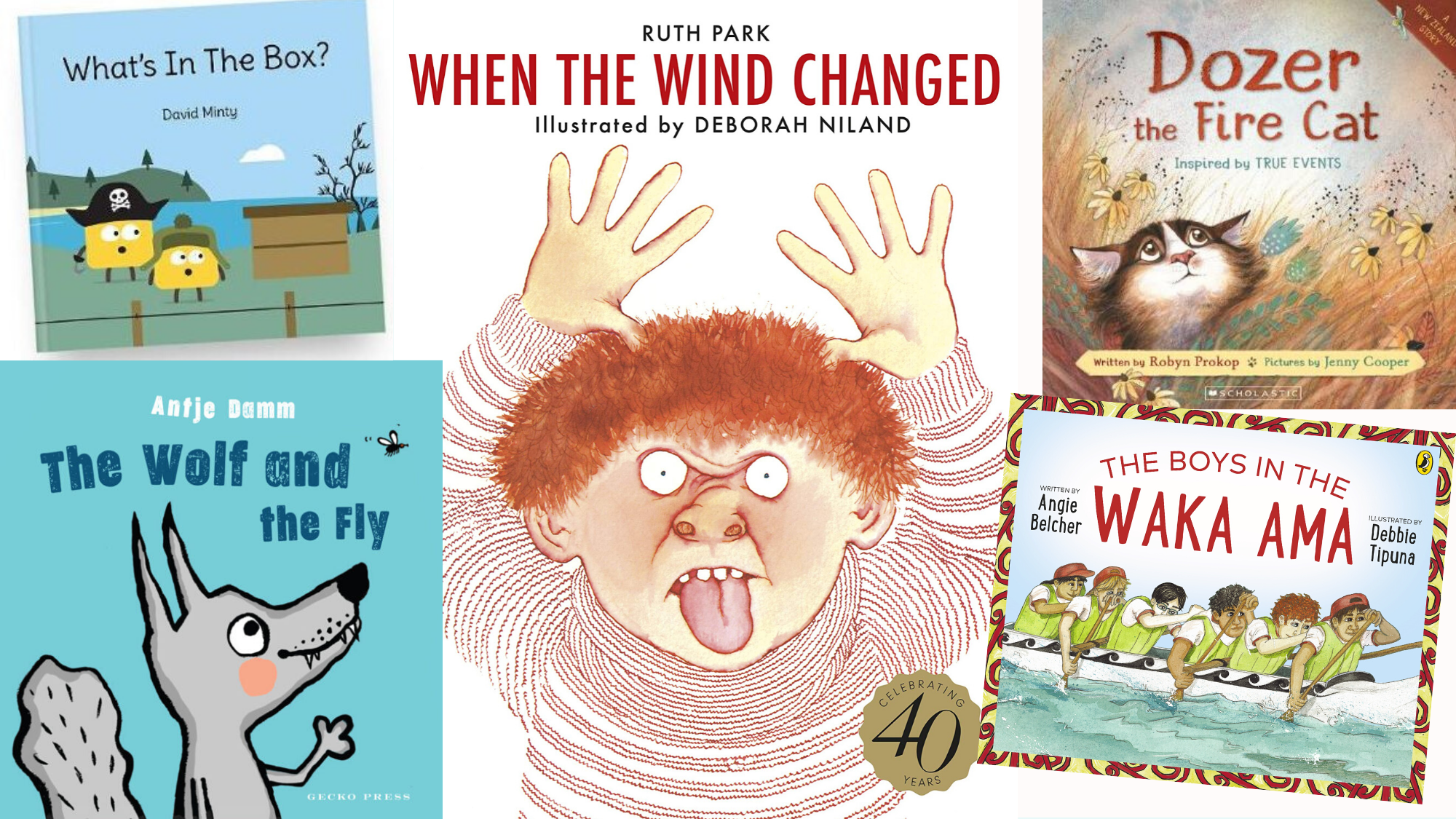
Dozer the Fire Cat: Inspired By True Events, by Robyn Prokop, Illustrated by Jenny Cooper (Scholastic)
As a lifetime lover of the Mog stories, I am still a sucker for a cat story, although I am always a little apprehensive as Mog has set the bar pretty high. Dozer the Fire Cat did not disappoint, I was drawn in immediately by the captivating story and winning illustrations.
This is a beautifully illustrated tale of Dozer, who gets left behind by his family in the Nelson Wildfires in 2019. The story is pacy and full of adventure but as they say in Masterchef, the hero of the dish, was Dozer. The writer and illustrator have perfectly captured all the emotions and positions of cats, from blissfully sleeping to proudly catching a bug.
The story is pacy and full of adventure but as they say in Masterchef, the hero of the dish, was Dozer.
This is a topical read. It details what happens in a fire when families and their pets need to evacuate. While the Nelson fires were nowhere near the scope and devastation of the Australian fires, this book captures the panic and rush to find those things that are irreplaceable: pets, family photos, and favourite toys. There is urgency, but the emotion is pitched perfectly for the intended age group and doesn’t feel overwhelming.
‘When the sky glowed red and the air smelled thick with smoke,’ the family needed to evacuate. They are told to take only their most precious treasures and the first thing the children do is call for Dozer. However, Dozer is too busy stalking. Mum packs their passports, Katie her bear, Floyd his paints, and Dad packs the chickens. And this time everyone calls for Dozer. Who is busy pouncing. While the family rush to pack their treasured belongings and call for Dozer between each load, Dozer manages to catch bugs, wash himself and sleep, a lot.
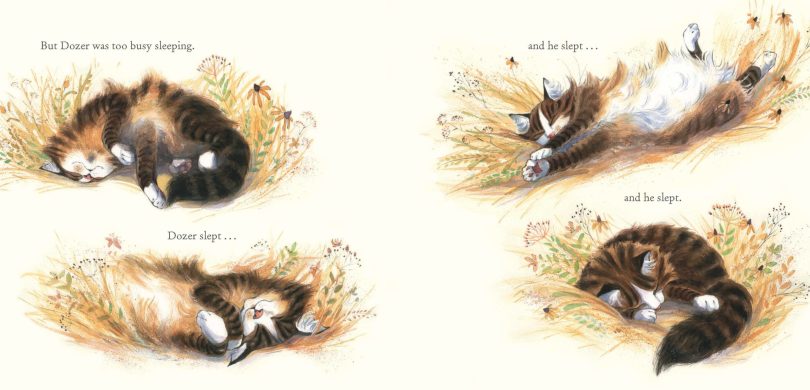
Finally, the family must leave, and Dozer is nowhere to be found. The noise of the helicopters and sirens scares Dozer and he runs away. The family meanwhile are searching for Dozer at the evacuation centre. I was lump-in-the-throat relieved when the family finally returned, and Dozer comes home and gets the cuddle he has been longing for.
The language flows beautifully, is descriptive and perfect for young ones. I like the repetition as the family pack and then small details like the change to the word ‘remembered’ as they pack their final treasures.
The final spread has information about the fires, which is well laid out and full of interesting extra facts that will appeal to kids and adults reading this. This is a thoughtfully written and beautifully illustrated story that will sit comfortably next to your other favourite cat books.
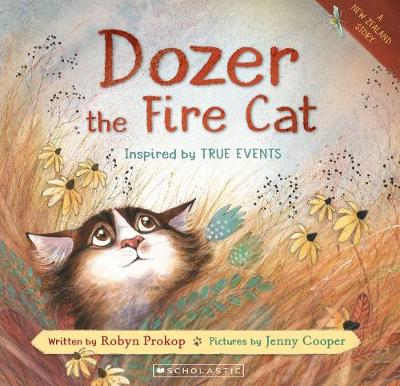
The Boys in the Waka Ama by Angie Belcher, illustrated by Debbie Tipuna (Puffin)
Working on the ‘if it ain’t broke don’t fix it’ premise, Angie and Debbie, have recreated their bouncy, upbeat, The Girls in the Kapa Haka, with The Boys in the Waka Ama. It uses the same House that Jack Built rhyme to take the reader through the story of a boys’ waka ama crew training and racing in a big race. It shows the dedication of the boys, starting at dawn to train through to when they win the race.
The simple illustrations had some nice moments, I particularly enjoyed the small detail of the two boys staring out to sea with their hands in their pockets, while their teammates stretched, yawned and had a kai. It captured a small but real moment of sharing and ‘shooting the breeze’ first thing in the morning. However, some of the perspectives were a little off to me; pictures of the boys walking front on seemed to have them hovering above the ground on tiptoe. There is some diversity amongst the teams and in the crowd; there was a child in a wheelchair in the audience and a few girls in waka as well.
I particularly enjoyed the small detail of the two boys staring out to sea with their hands in their pockets, while their teammates stretched, yawned and had a kai.
I do wonder about the necessity of the gender specific titles of these books, and whether this is necessary in 2020. While it seems like a natural progression after The Girls in the Kapa Haka, it seems dated and unnecessary.
Appropriately, the text is peppered with te reo Māori and has an easy to read glossary at the back. I did feel like I needed to read some of the rhymes a few times to ‘make them work’ as on the first read through I had trouble maintaining the rhyme and rhythm, but that may say more about my own abilities reading aloud than the scan.
The story is simple and energetic and despite some detailed explanation in the text it feels like 3–7-year-olds are the intended audience. I like the small format of the book, it’s an easy fit for younger children to hold onto.
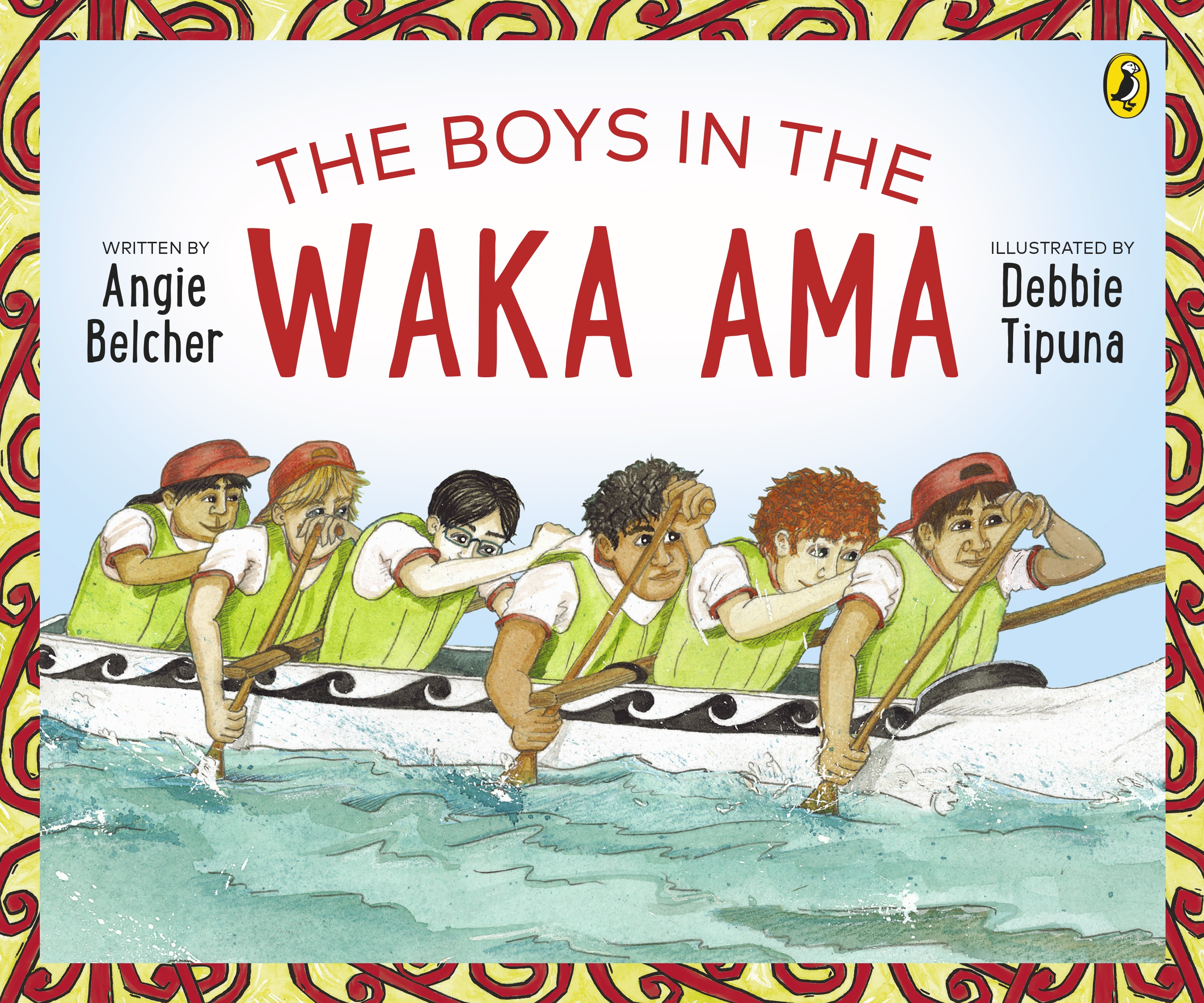
The Wolf and the Fly by Antje Damm (Gecko Press)
Lordy, this board book is a delight. It is a very simple idea that has been perfectly executed. It starts with ‘Wolf is a bit peckish today. So he eats the…’ On each page, Wolf stands looking at his shelf. On the facing page, there is a duck, an apple, a fish, a cactus, a car, a fly, a bird and a cat on a shelf. One by one, they disappear as Wolf snacks on them and the child can guess who has been eaten as they aren’t named.
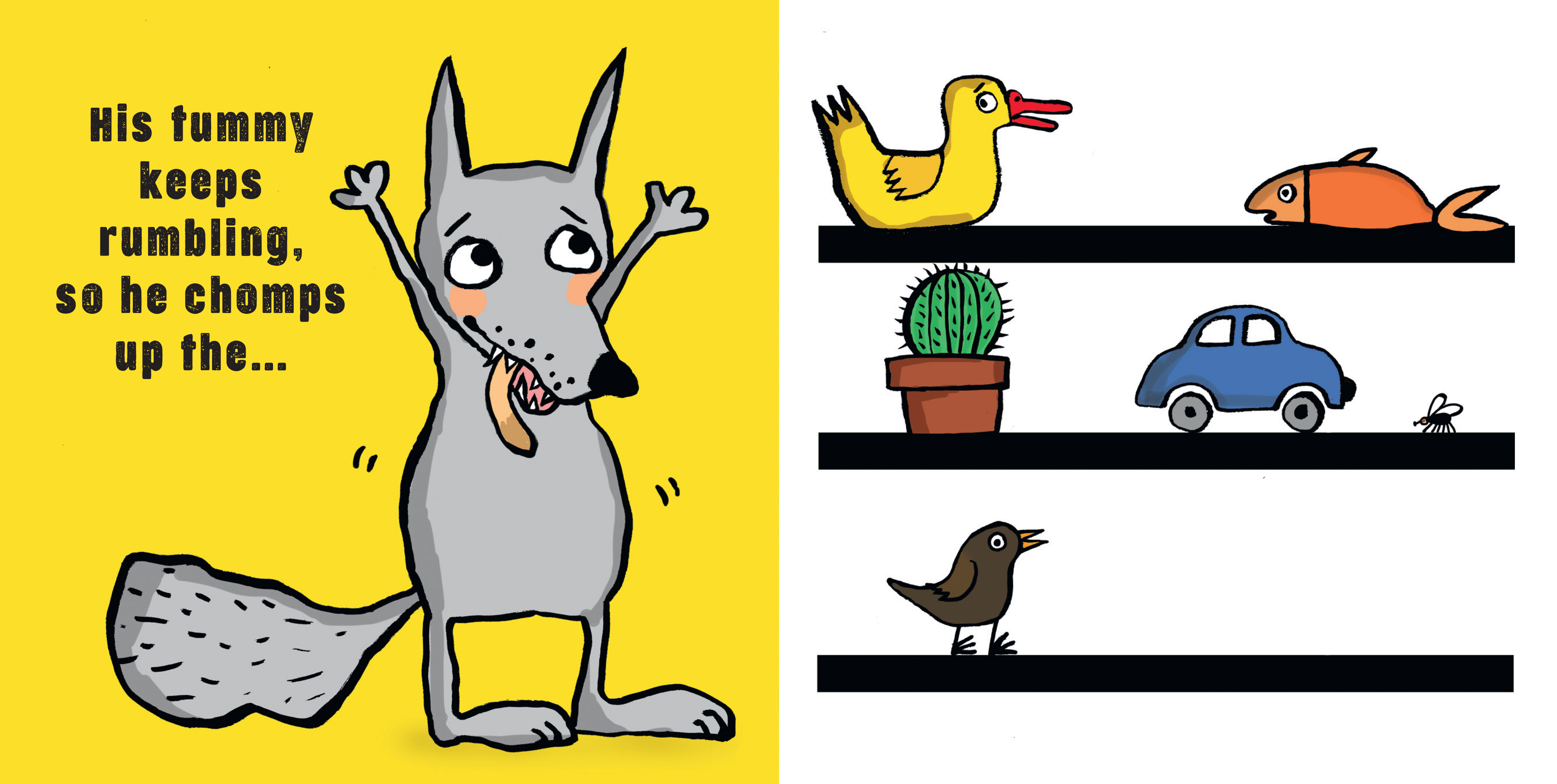
The illustrations are contemporary and while simple, they are clever and expressive. Spoiler alert: I particularly enjoyed how the colours on the left-hand side match the object Wolf is about to eat next. The cat, duck and bird look increasingly concerned as you turn the pages. The cactus just sits there, safe in the knowledge that even a greedy little wolf isn’t going to snack on it; apparently wolves aren’t keen on their greens.
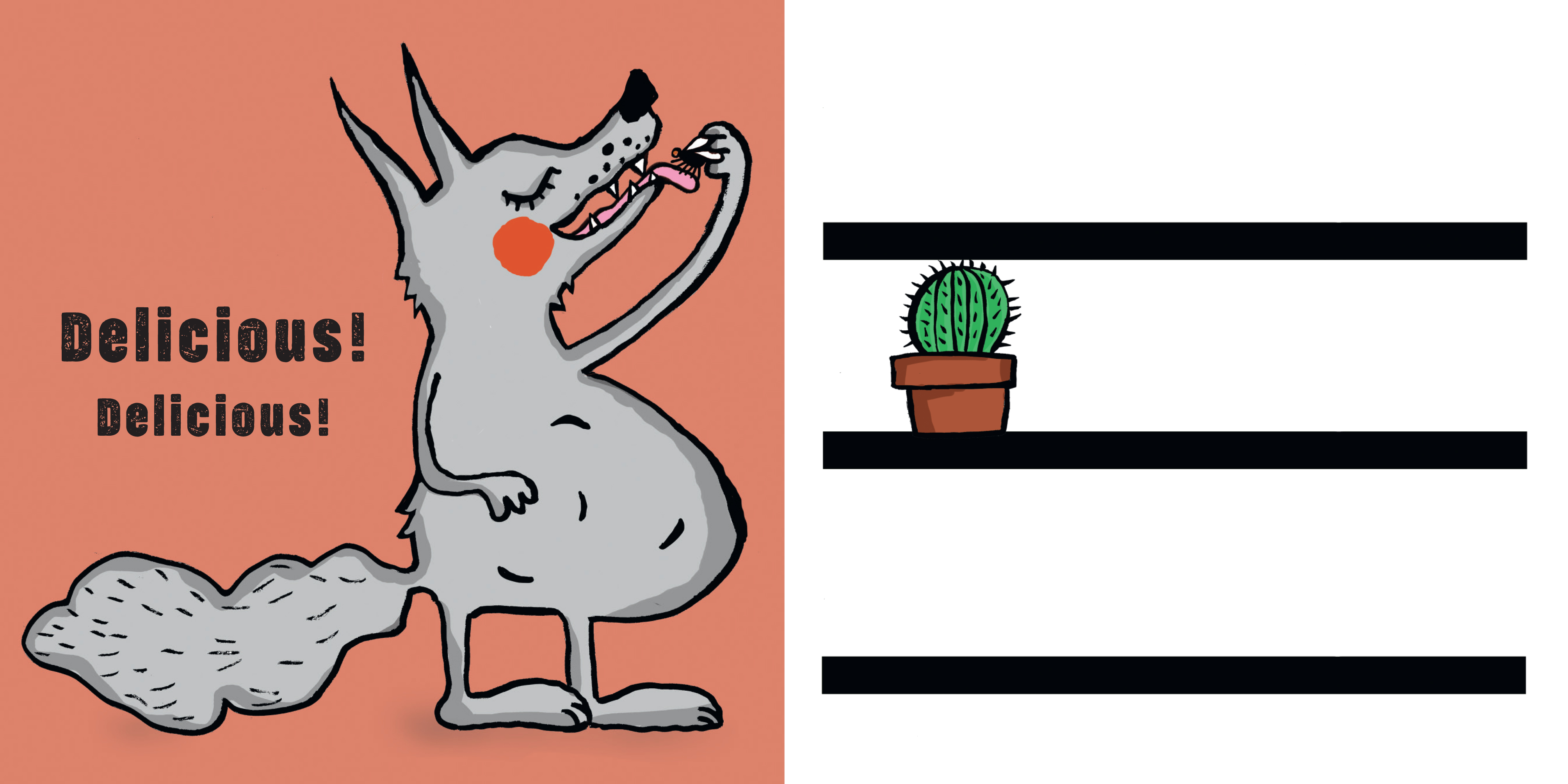
Wolf’s stomach gets larger and larger, but his tummy keeps rumbling and after a nap he is still hungry. Then he goes to the bathroom and eats some more, until finally the tiny little fly tips him over the edge. Wolf is looking pretty green by this stage and the final spread is a spectacular regurgitation of everything he has wolfed down (pun intended). Yuck! But yay! Because everything is saved, no one dies!
This book ticks all the boxes for me: age appropriate, funny and expressive, hidden clues, interactivity, suspense, a greedy protagonist, a tiny bit gross and the design feels spot on. I loved the colour palette and illustrations, there are small details that provide depth and movement to the story.
This book ticks all the boxes for me: age appropriate, funny and expressive, hidden clues, interactivity, suspense, a greedy protagonist, a tiny bit gross and the design feels spot on.
This is a book small kids will love and those reading it to them will equally enjoy, which is just as well, because I can imagine it will be read a lot.
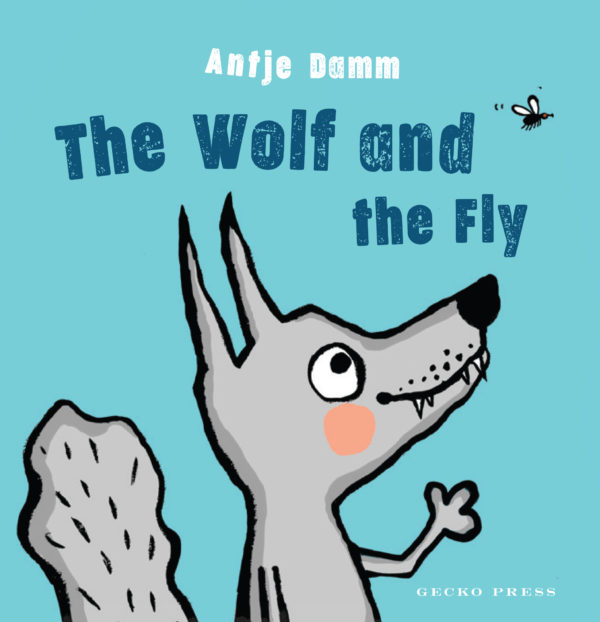
When the Wind Changed by Ruth Park, illustrated by Deborah Niland (Angus & Robertson)
The 40th anniversary edition of When the Wind Changed has me confessing that I have never seen this book before. How could this even be? I like to think I have a pretty solid handle on New Zealand writing and kids books particularly but somehow this book passed me by. Even though I don’t recall this book or story at all, it felt nostalgic and familiar and it reminded me of the likes of David McKee and The Boy with Square Eyes by Juliet and Charles Snape.
This is a humorous cautionary tale with a simple font and a slightly ‘eighties’ style of illustration. The story is about Josh, a boy who is very good at pulling horrendous faces, each one slightly more gross than the last. He pulls them at the neighbour’s dog (who wants to bite him) and scares Gran and the postman. He tries it out on Mum, who isn’t a screecher but did ask him not to scare people in the street as it wouldn’t be good for dad’s business. This is the eighties, so Dad being a bank teller makes him an important person.
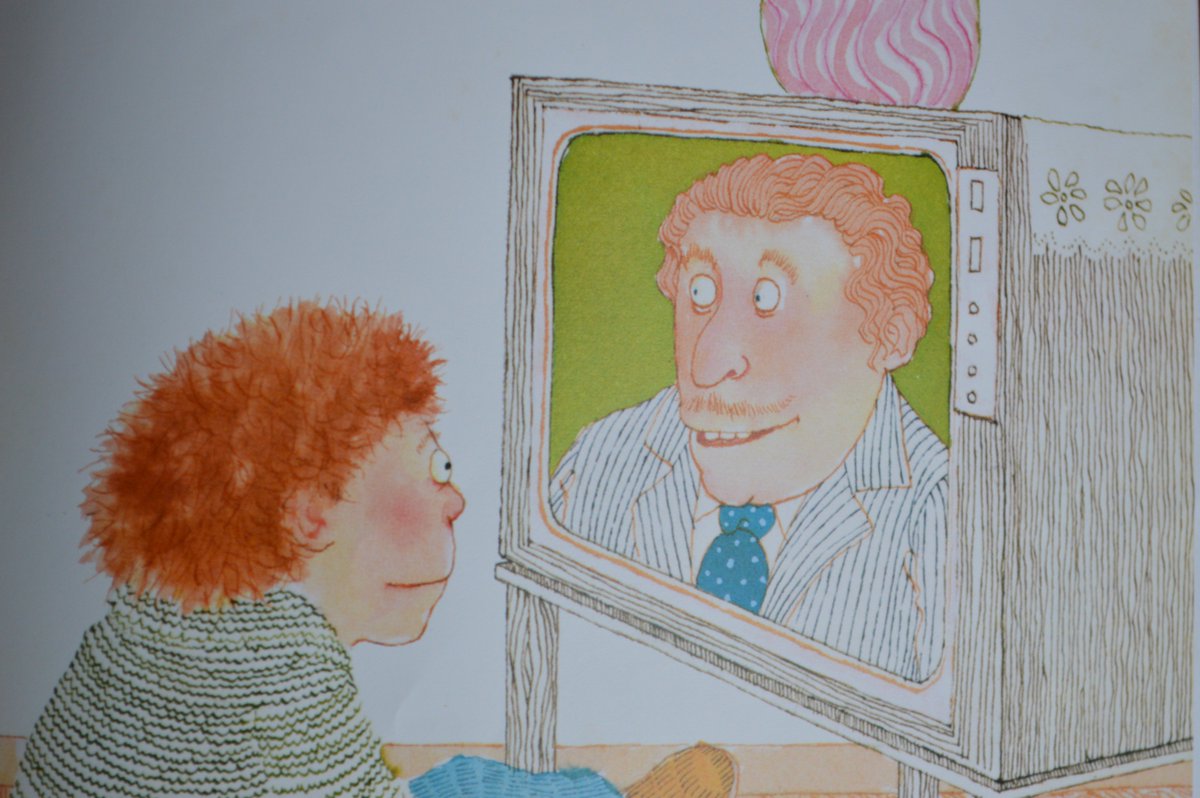
Josh tries out his most awful faces on Dad, who warns him that ‘if you’re making a face and the wind changes it will stay that way’. We know what’s coming here. Josh manages his most horrifying face yet and you guessed it, the wind changes. He decides to ask Dad what to do about it, and as he is a thoughtful boy, he puts on his cowboy hat and ties a red hanky around his face so as not to scare people in the street on his way to Dad’s work. However, when he gets to the bank there is a robbery in progress. His gruesome face saves the day, but I’ll let you find out how! After that adventure, the wind changes and Josh is back to normal. There is a clever little twist at the very end that readers will love.
This is such a funny story; it is clever and playful at the same time and the illustrations are glorious! I enjoyed reading the foreword from the illustrator who said her ‘task was to make each face more gruesomely funny than the last, with the last one being sufficiently scary to reduce the bank robber to a frightened jelly’. When I saw the first face, I doubted her ability to deliver on this, but she did so in spades. Her detailed line drawing on clean white space makes the truly disgusting faces ‘pop’ and kids and adults alike will enjoy the laugh this brings.
This is such a funny story; it is clever and playful at the same time and the illustrations are glorious!
When the Wind Changed has been continually in print since 1980, and I can see why. Sometimes books sit firmly in the era they were written in, but this is a timeless story and somehow the few eighties ‘tells’ add to the charm and manage to make this more whimsical and enjoyable.
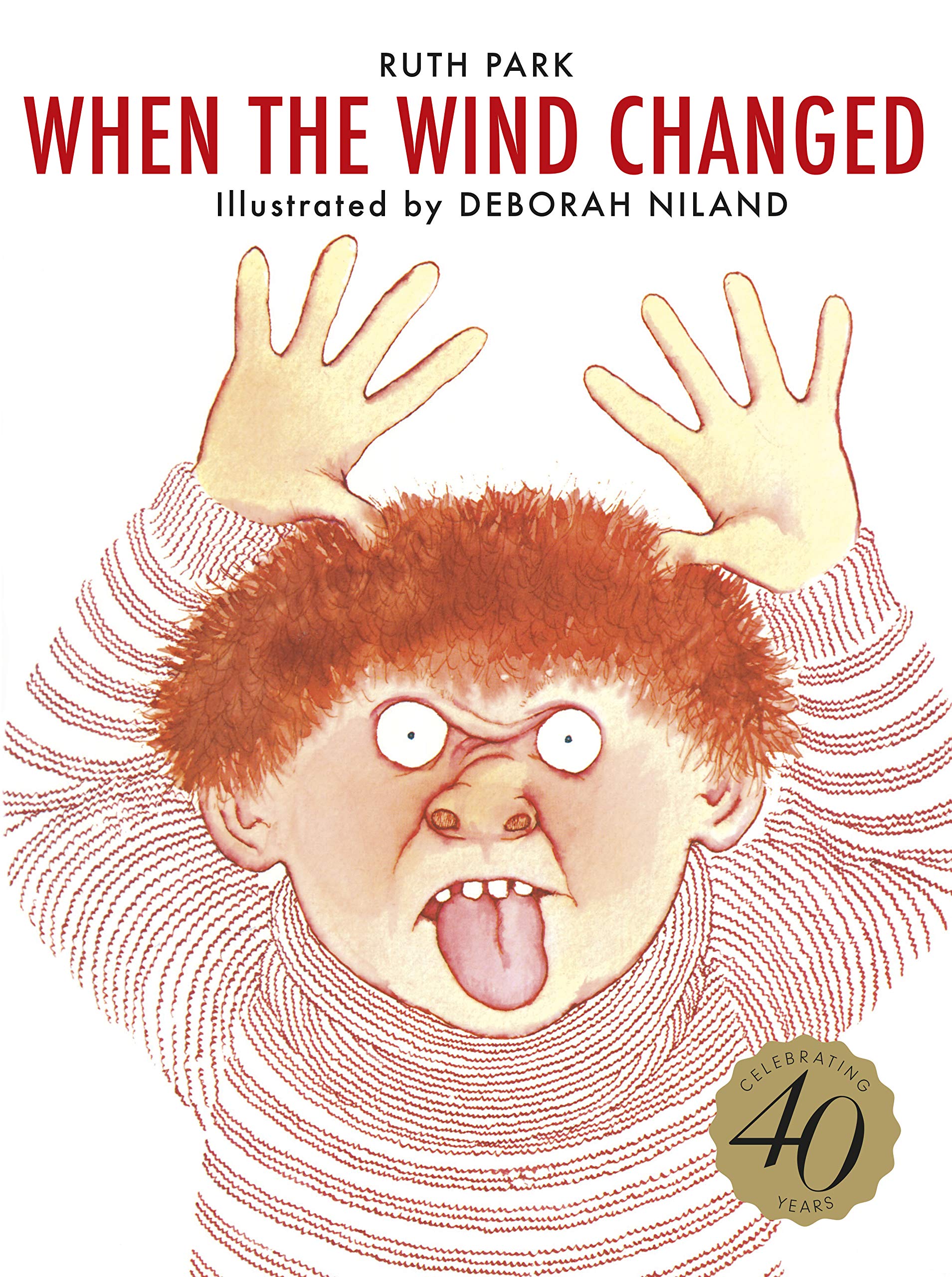
when the wind changed
by Ruth Park
Illustrated by Deborah Niland
Angus and Robertson
RRP $29.99
What’s in the Box? by David Minty (Minty Books)
For those who can’t get enough of humorous books for young readers, this is for you. It is basically a one liner, drawn out into a picture book format. Unusually for a book that is printed by the author, the spot laminate cover on good, heavy stock speaks to the book’s sound production values.
Two yellow, box-shaped characters, one with a pirate hat and the other with a green hat, who I shall refer to as Pirate Hat and Green Hat from now on, find a box and imagine what is inside. Their ideas are absurdly imaginative, from the entrance to a tunnel full of turkeys to penguins with rocket boosters.
Their ideas are absurdly imaginative, from the entrance to a tunnel full of turkeys to penguins with rocket boosters.
Finally, when they have exhausted all possible ideas, they rush to open the box. Green Hat opens it first then takes off to hide. Pirate Hat is still consumed with curiosity and proceeds to open the box, only to find it is actually a beehive. Pirate Hat then gets stung, quite badly. If this was real life or even dystopian YA and not a picture book Pirate Hat would be dead by now. But the punch line doesn’t end there, he then asks the question on everybody’s lips; why didn’t Green Hat tell him about the bees? Green Hat says, oh like the one on your hat? Pirate Hat runs off being chased by a bee, leaving Green Hat to sit on the fence and play with a cowpat. Now, I’m sorry to break this to Pirate Hat, but his friend is a monster.
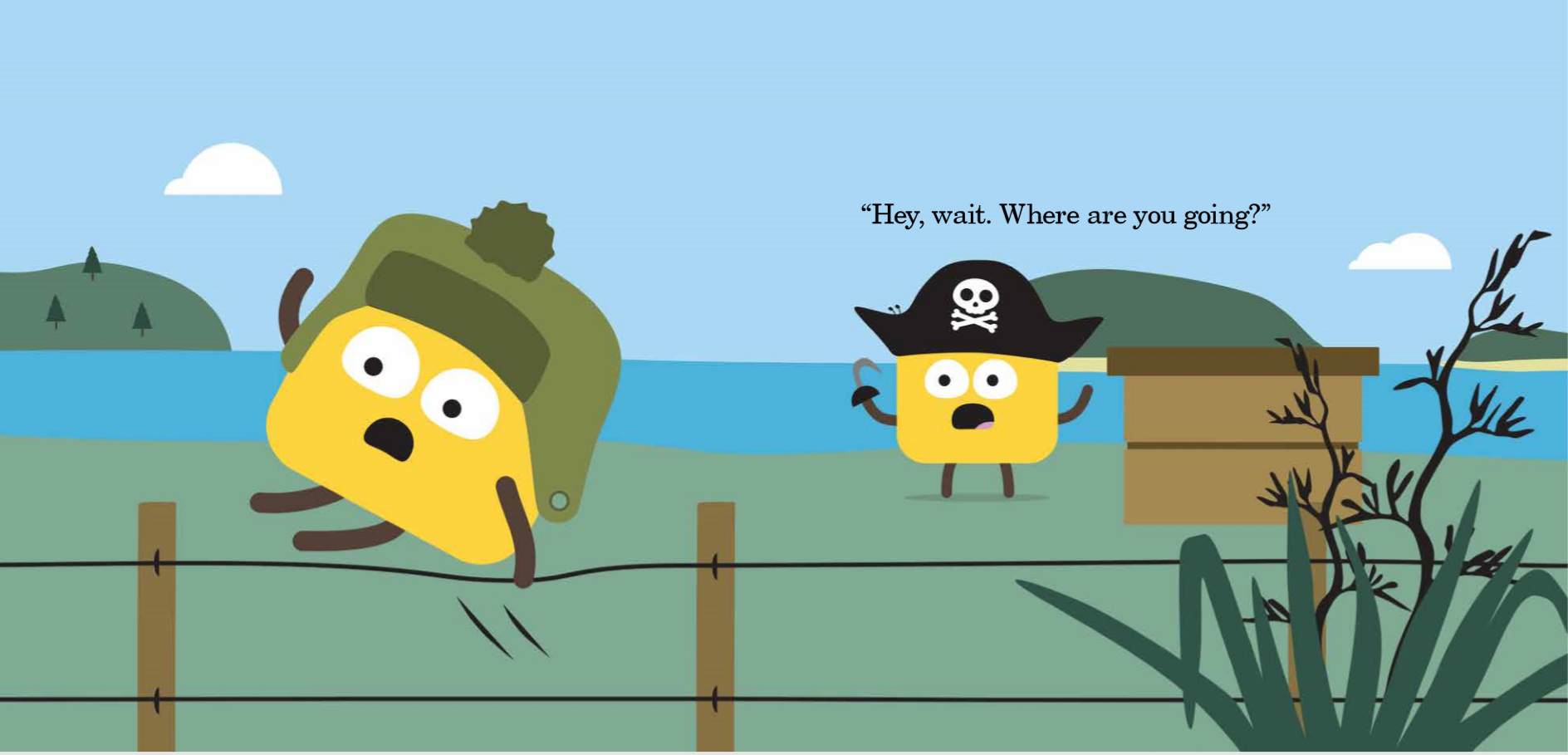
I am not averse to the following things in picture books: simple illustrations, slapstick humour and occasionally, poo. For example, Jon Klassen and Mac Barnett, do a hilarious collection of books called Square and Circle etc, literally about characters that are squares and circles. The humour is sort of silly, but they are without a doubt, very funny. And I’m not even sure how they manage to do this but the simple, line drawn characters still manage to show emotional depth. And The Story of a Little Mole Who Knew It Was None of His Business is still a favourite of mine after many years. But I found this story to be a bit one note.
Simple illustrations can be clever and still portray emotion, but the computer-generated pictures reminded me of emojis. I may be off base and a certain type of 3–6-year-old reader might giggle their way through this book and love the bold illustrations but the jokes fell a little flat for me.
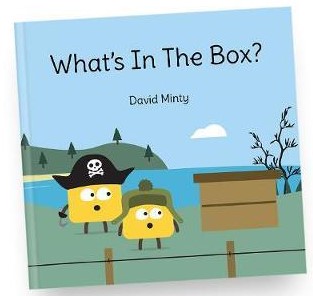
Simie Simpson
Simie Simpson (Te Ati Awa) has worked in the New Zealand book industry for almost two decades, as a librarian, a sales manager for Walker Books New Zealand and a bookseller. She is the programmes manager for Read NZ Te Pou Muramura.



